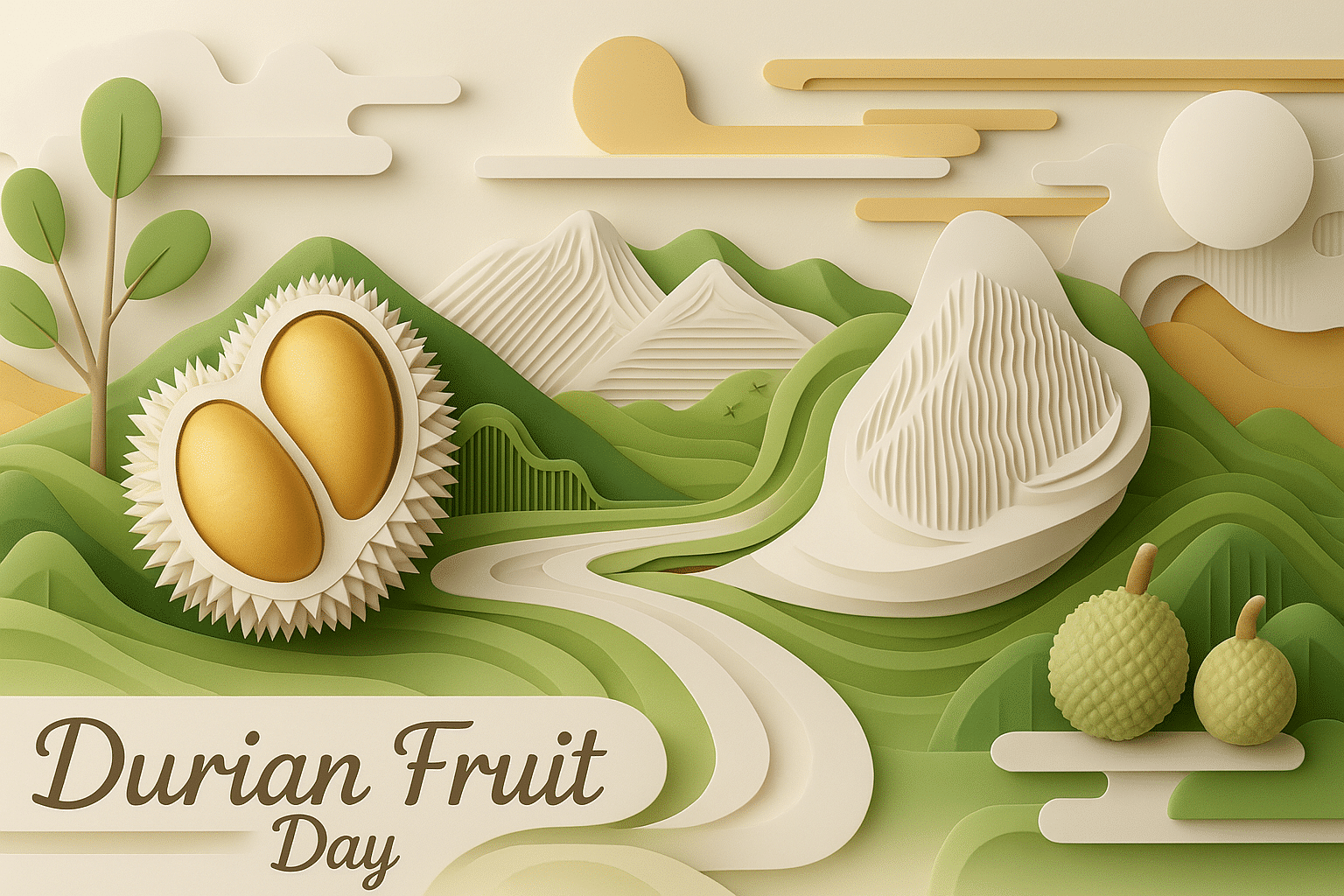What is Durian Fruit Day?
Durian Fruit Day is held every year on July 9 and is celebrated worldwide. The day honors the durian, a tropical fruit known for its bold flavor and strong smell. Often called the “King of Fruits,” the durian is as famous for its creamy texture as it is notorious for its powerful aroma, which has led to bans in hotels and public transport across Asia. Many people love it. Others can’t stand it. That contrast is part of what makes this fruit so iconic.
Durian Fruit Day gives people a reason to try this unique fruit for the first time or to celebrate their long-standing love for it. From Malaysia to Thailand, and now in cities around the world, food events, cooking shows, and tastings mark the occasion. Whether you enjoy it in ice cream, pastries, or straight from the shell, the durian is unforgettable.
History and Origin
Durian Fruit Day was created to highlight the cultural and culinary value of the durian, especially in Southeast Asia where it has been eaten for centuries. The date July 9 falls within the height of durian season in many countries, making it the perfect time to enjoy the fruit in its freshest form.
As durian became more known internationally, fans began celebrating its unique place in food culture. In many places, the day is also used to support local farmers and raise awareness of how the fruit is grown. Durian farming remains a vital part of rural economies in countries like Indonesia, Malaysia, Thailand, and the Philippines.
Who participates in Durian Fruit Day?
- Food lovers: Explore durian for the first time or share their favorite recipes.
- Local growers: Use the day to promote their harvest and educate others about the fruit.
- Chefs and bakers: Create innovative dishes using durian in sweet and savory forms.
- Cultural groups: Host events that share the durian’s place in Southeast Asian heritage.
- Curious newcomers: Try the fruit out of curiosity, despite its reputation.
Slogans and Themes
Slogans like “King of Fruits,” “Embrace the Stink,” and “Love it or hate it, it’s durian” are often used. Themes include celebration, discovery, and cultural pride. The day encourages people to be adventurous and to see food as more than just taste;it’s tradition, identity, and connection.
Colors, Symbols, and Patterns
Colors
- Green: Represents the spiky outer shell of the fruit.
- Yellow: Refers to the soft, golden flesh inside.
- Brown: Evokes the earth and tropical trees where durians grow.
Symbols
- Durian icon: Often used in logos and food labels to signal its presence.
- Fruit carts: Common in Southeast Asia, these represent durian in its native setting.
- Durian tree leaves: Highlight the natural, tropical origin of the fruit.
Patterns
- Spiky textures: Inspired by the fruit’s skin.
- Tropical fruit patterns: Include bananas, mangosteens, and jackfruit alongside durian.
- Bold color blocks: Reflect the strong opinions the fruit inspires.
Most Used Hashtags
- #DurianFruitDay
- #KingOfFruits
- #DurianLovers
- #DurianSeason
- #TropicalTaste
How do you celebrate Durian Fruit Day?
- Host a tasting: Invite friends to try durian fresh or in desserts, and compare reactions.
- Try a recipe: Make a new dish featuring durian;pancakes, cheesecake, or curry.
- Visit a market: Buy durian from a local seller and learn how to choose the best one.
- Join a festival: Some towns and cities hold durian-themed events or food contests.
- Post your experience: Share photos, reactions, or reviews on social media using the hashtags.
Why is Durian Fruit Day important?
Durian Fruit Day helps people discover a fruit that challenges expectations. Its unusual combination of sweetness, richness, and intense smell sparks debate but also invites cultural learning. It’s a chance to talk about food, identity, and openness to new experiences. The day also supports growers who rely on durian as a seasonal crop. For fans, it’s a celebration. For skeptics, it’s an invitation. Either way, nobody forgets their first durian.
Features
- Arts Literature and Music
